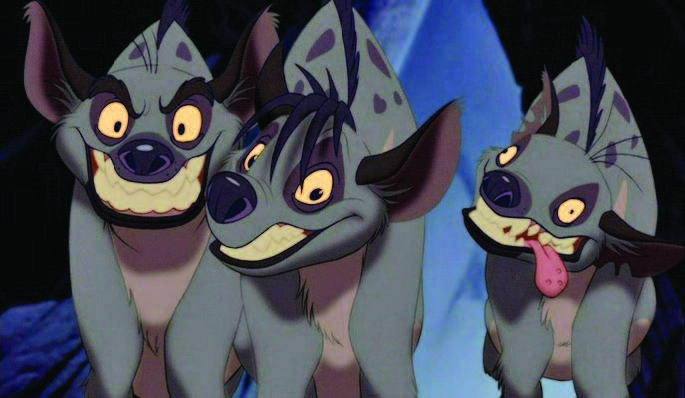When we anthropomorphize animals, we attribute human characteristics to their facial expressions, behaviors, attitudes, thought processes, and the like. The question is, should we?
Anthromophorph – Anthropoporph – Anthropowhat?
Coming home one night, you see your place trashed: pillows strewn on the floor, couch soiled, books shredded. You look at your furry companion and see guilt in his face.
But can Brownie feel guilty?

Assuming Brownie feels guilty is an example of anthropomorphism. Arguably, Brownie may understand he did something wrong, but not necessarily with the moral weight that humans do. It is very unlikely for Brownie to feel bad he soiled your couch for the nth time because you will have to clean up his mess.
Based on a 2009 study for the scientific journal Behavioural Processes written by Dr. Alexandra Horowitz, a dog cognition scientist, Brownie has that look on his face as a response to your reaction upon seeing his mess. What he has on his face is fear. One of the reasons we conclude it’s guilt is because that’s what a human would’ve felt.
In this way, anthropomorphism can be good. In some cases, however, it can threaten an entire species’ existence.
(Anthropomorphism is the attribution of human characteristics, behavior, and feelings to a nonhuman, be it an animal, object, or deity. Coming from the Greek words ánthrõpos, meaning “human”, and morphé, meaning “form”, it literally means to attribute human form.)
Even though Brownie may have soiled your couch multiple times, this will not urge you to just leave him out on the streets. You know Brownie loves you and he will be sad if you leave him. You will imagine him hungry, cold, and lonely, just as an abandoned human would feel.
In other words, anthropomorphism allows us to be more considerate of our furry buddies. Because we anthropomorphize, we become more empathetic with non-human animals. We are more likely to help animals in distress, give homeless cats and dogs food, and, at the very least, avoid causing them harm.
Likening non-human animals to us can also be a tool for animal conservation efforts. In campaigns for the protection of elephants against the ivory industry, for example, the human-like attributes of elephants have been commonly highlighted, such as their impressive intelligence, ability to suffer, and family bonds. We respond well to these messages. Because we can relate to the elephants, we become conscious consumers, if not activists for the cause.
The Bad
There is a high incidence of anxious and misbehaved dogs. We have come to liken our furry pals to us so much that we sometimes fail to see that they are, in reality, dogs. We tend to misinterpret their behavior or address them incorrectly.

Think of the last time your furry pal was stressed. You probably did your best to soothe them by petting them, telling them they were a very good boy or girl and that everything was going to be okay. Albeit effective with humans, these actions reinforce just their anxiety. Unintentionally, we are telling him it is okay to be anxious.
To illustrate more about the cons of anthropomorphism, we think hyenas are evil and scheming, like the portrayal of Shenzi, Banzai, and Ed from Lion King. We’ve come to know them as menacing, wicked, evil.
In reality, hyenas are wild animals just trying to live another day, playing their part in the ecosystem while they’re at it. But we’ve anthropomorphized them, attributing to them uniquely-human traits.
Now, the population of hyenas are either in decline or threatened. According to the International Union for Conservation of Nature, one of the major reasons for the animal’s decline is persecution by humans.
Where should we stand?
Where we stand is where it is best for the animals we share this home with.
Whether or not they experience the world the same as we do, in their own way they do feel pain and fear, and they can place trust. As Charles Darwin, a naturalist known for his contribution on the science of evolution, wrote in The Descent of Man, “. . . the lower animals, like man, manifestly feel pleasure and pain, happiness and misery.”
Empathy to non-human beings is morally good and not misplaced as it motivates us to care for them. For us to be effective guardians, however, we must always put in mind that they have their own way of adapting and being.
Neutering of Animals vs Vasectomy of Humans
People tend not to support spaying and neutering because of the anthropomorphic desires attributed to animals: we think that they have emotional preferences about reproduction.
Wanting to experience the joys of motherhood, especially bearing someone of your flesh and blood, is a highly emotional desire — a very human desire. But, while animals do care for their young, it does not necessarily mean they have an emotional desire to bear offspring.

Anthropomorphism contributes to the rising number of cats and dogs left in distress due to their overpopulation. According to online statistics from the American Society for the Prevention of Cruelty to Animals, approximately 1.5 million healthy animals are euthanized in the US alone. A significant number of cats and dogs are also homeless, making them susceptible to animal cruelty, accidents, and diseases.
Spaying is one of the best tools against animal cruelty. Risking the lives of millions of others because we attribute to a stray the human desire to bear offspring is a negative result of anthropomorphism.
This appeared in Animal Scene magazine’s November 2018 issue.




